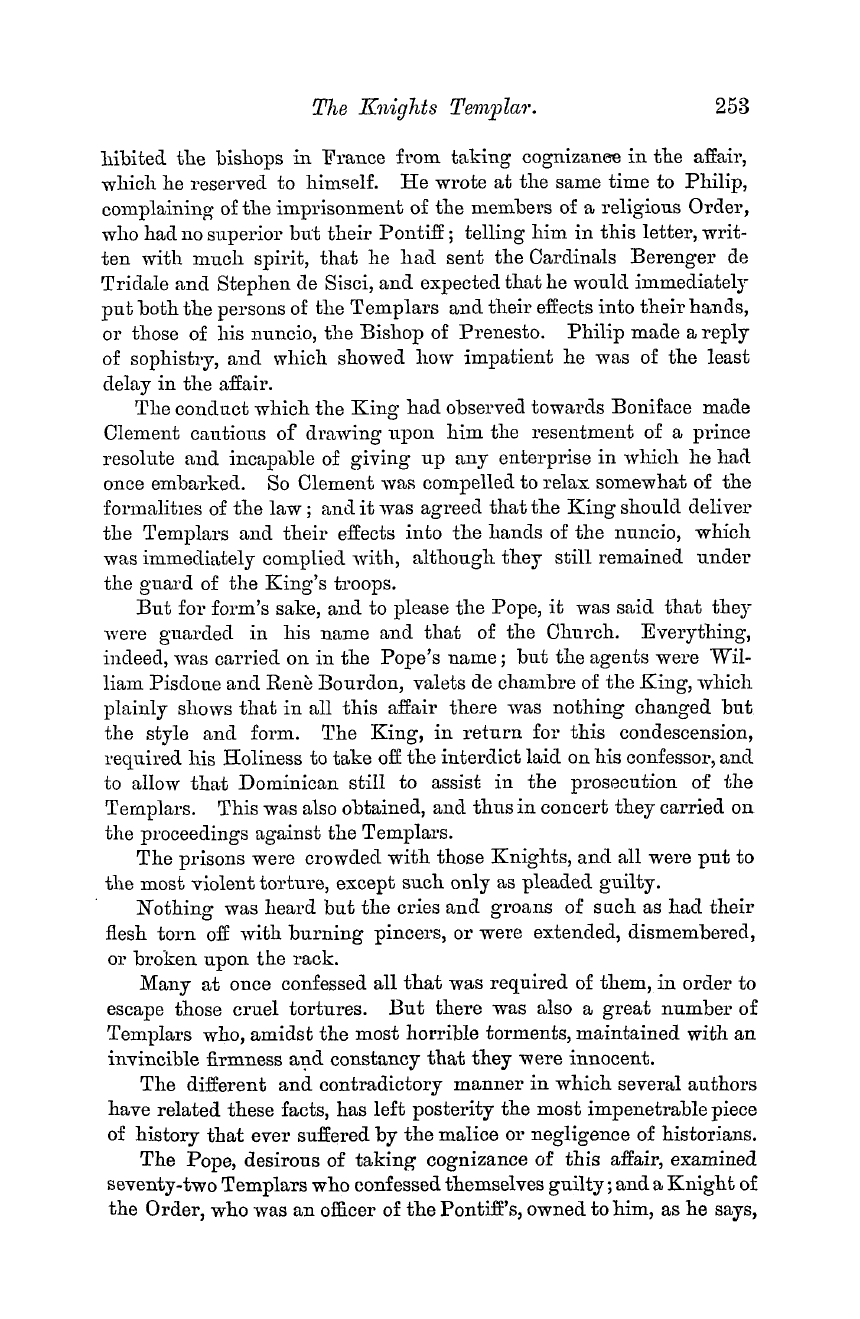-
Articles/Ads
Article EARLY HAUNTS OF FREEMASONRY. ← Page 5 of 5
Note: This text has been automatically extracted via Optical Character Recognition (OCR) software.
Early Haunts Of Freemasonry.
Fleet Street has undergone many changes . The primitive shop or stall gave place to more commodious and substantial houses , and these in turn are rapidly disappearing and being replaced by still more pretentious structures . The greatest part of it , as well as of its northern and southern tributaries , fell a prey to the flames in the great fire of
London , so that only at its extreme western end are there to be seen any buildings such as the Temple Church to remind us of old London , as it was before that terrible catastrophe . The greatest change that has been effected of late years has been brought about by the removal of Temple Bar . That its removal was
necessary will be denied by none who have any idea of the enormous traffic which daily passes along this important artery of London . Yet , in spite of its smoke-begrimed walls and its mud-bespattered gates , we somehow or other seem to miss it , as we miss the
wrinkled , weather-beaten face of an old familiar friend . It was high time it passed the way of most buildings . It was a terrible obstruction , especially in its latter days , when a substantial wooden hoarding was necessary to keep it from tumbling about our ears . But in its way it was a good old landmark , and , had its stones possessed
the gift of speech , they might have told us many a grim story of the later Stuart and early Georgian eras . Formerly the boundary line separating the cities of London and Westminster was marked by posts . These were succeeded by a wooden archway , which in turn gave place to the late Bar , erected 1670-72 , under the supervision of Sir
Christopher Wren , who received for it the sum of £ 1397 10 s ., out of which £ 480 was paid to Bushnell , the sculptor , for his four statues of James I . and Elizabeth—or , more probably , Anne—looking eastward , and Charles I . and Charles II ., facing westward . It cannot be said to have enhanced Wren ' s credit as an architect ; but no doubt it
answered the purpose for which it was built , and when closed and barred against the entrance of the sovereign may , in a certain sense , have been looked upon as a symbol of the power and independence of the Great City of London . ( To be continued . )
Note: This text has been automatically extracted via Optical Character Recognition (OCR) software.
Early Haunts Of Freemasonry.
Fleet Street has undergone many changes . The primitive shop or stall gave place to more commodious and substantial houses , and these in turn are rapidly disappearing and being replaced by still more pretentious structures . The greatest part of it , as well as of its northern and southern tributaries , fell a prey to the flames in the great fire of
London , so that only at its extreme western end are there to be seen any buildings such as the Temple Church to remind us of old London , as it was before that terrible catastrophe . The greatest change that has been effected of late years has been brought about by the removal of Temple Bar . That its removal was
necessary will be denied by none who have any idea of the enormous traffic which daily passes along this important artery of London . Yet , in spite of its smoke-begrimed walls and its mud-bespattered gates , we somehow or other seem to miss it , as we miss the
wrinkled , weather-beaten face of an old familiar friend . It was high time it passed the way of most buildings . It was a terrible obstruction , especially in its latter days , when a substantial wooden hoarding was necessary to keep it from tumbling about our ears . But in its way it was a good old landmark , and , had its stones possessed
the gift of speech , they might have told us many a grim story of the later Stuart and early Georgian eras . Formerly the boundary line separating the cities of London and Westminster was marked by posts . These were succeeded by a wooden archway , which in turn gave place to the late Bar , erected 1670-72 , under the supervision of Sir
Christopher Wren , who received for it the sum of £ 1397 10 s ., out of which £ 480 was paid to Bushnell , the sculptor , for his four statues of James I . and Elizabeth—or , more probably , Anne—looking eastward , and Charles I . and Charles II ., facing westward . It cannot be said to have enhanced Wren ' s credit as an architect ; but no doubt it
answered the purpose for which it was built , and when closed and barred against the entrance of the sovereign may , in a certain sense , have been looked upon as a symbol of the power and independence of the Great City of London . ( To be continued . )































































